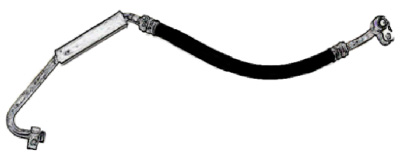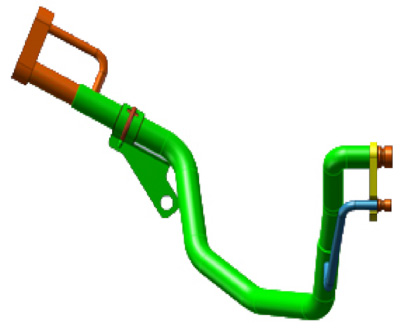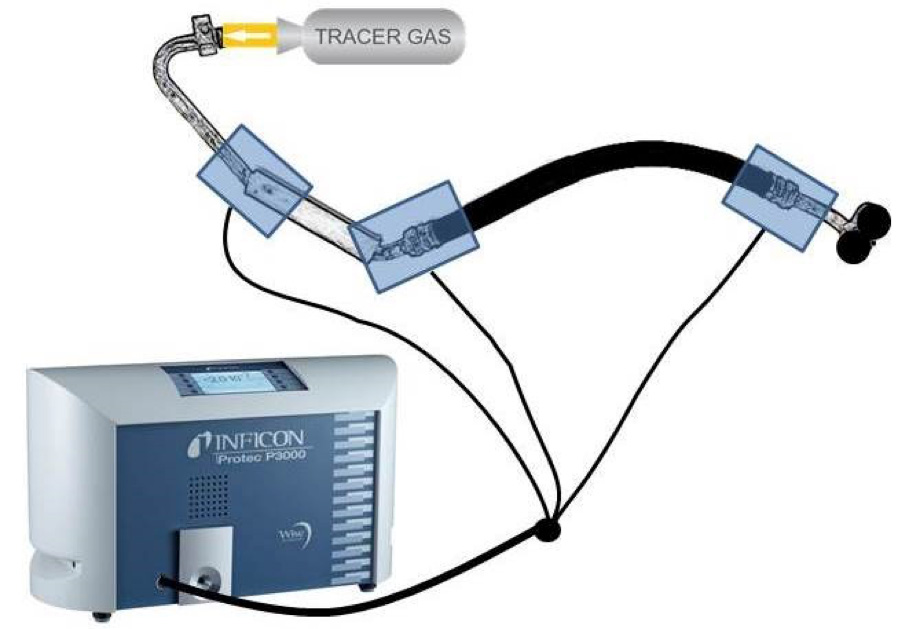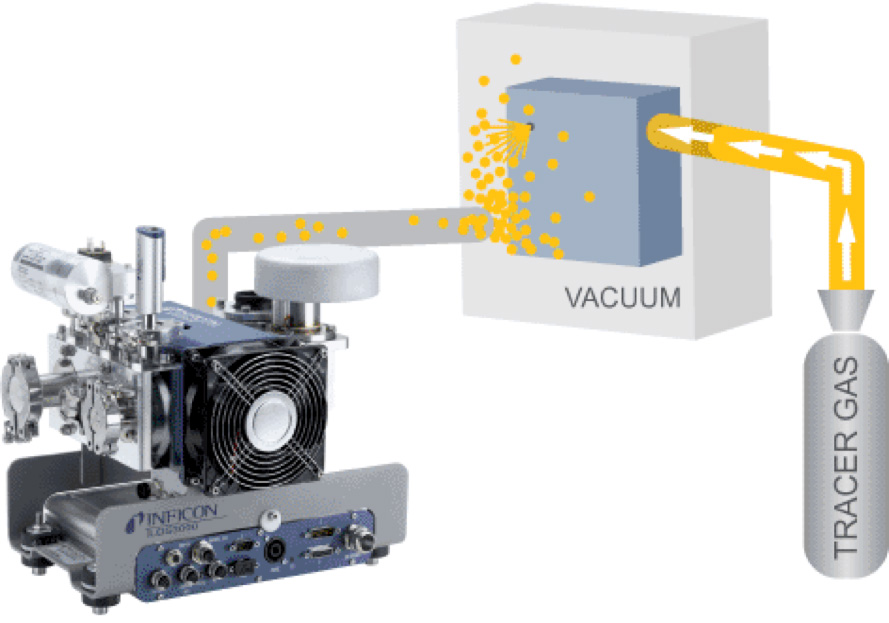Test de fuite pour canalisations de climatiseurs mobiles
Description of Technical Challenge

State-of-the-art MAC hoses are tested for leak rates in the range of 2 – 5 g/a loss of refrigerant.

In an IHX hose, two air conditioning lines run in contra flow to each other exchanging heat between an inner and an outer pipe and therefore need to be tested more intensively.
The well-known refrigerant R134a will be banned as a highly climate-damaging fluorinated greenhouse gas. Replacements include R1234yf, which, unfortunately is classified as extremely flammable and also reacts when heated to form highly corrosive hydrofluoric acid. R1234yf also is by far more expensive than R134a. Both of those factors are prompting manufacturers to calculate a lower reserve of refrigerant for their systems, which in turn, increases the leak rate requirements.
Standard AC hoses consist of flexible tubing with aluminum connectors on both ends to connect to other components of the AC circuit. In recent times, Internal Heat Exchanger (IHX) hoses became more prevalent. An IHX hose is an AC hose with a built-in heat exchanger. In the IHX hose, two air conditioning lines run in contra flow to each other exchanging heat between one inner and one outer pipe. It uses the cold vapor from the evaporator to cool the hot liquid before it enters the expansion device, resulting in increased cooling. The amount of energy used by the air conditioning system can be reduced by taking advantage of the increased cooling. This results in increased fuel economy and reduced emissions.
Currently, most AC systems are tested for a leak rate of 2 - 7 g/a of refrigerant corresponding to a helium leak rate in the range of 10-5 mbar∙l/s. Most air conditioning components are currently tested for leak rates in the order of 10-4 to 10-5 mbar∙l/s, but leak rate requirements may become more stringent with the ongoing introduction of R1234yf.
The INFICON Solution
Leak testing standard AC hoses in component production
| Clam shell testing | Vacuum chamber testing | |
|---|---|---|
| Throughput | Medium | High |
| Investment | Medium | High |
| Integral / Localizing | Localizing method | Integral method, leak needs to be localized later |
Comparison of leak testing methods for component production

AC hoses are tested with multiplexer clam shell systems, allowing to locate the leak if the hose is found leaky in one test set-up.
In a clam shell system, small clamps are placed around the connectors to be tested. The AC hose is then evacuated and pressurized with helium. If the connection is leaky, the helium concentration inside the clam shell will increase. The Protec P3000(XL) Helium Leak Detector is then connected to the clams and draws a sample from the inner volume of the clam shell. If helium is present in the sample, it is then detected by the Wise Technology® helium sensor inside the Protec® P3000(XL). The high flow of the Protec P3000(XL) offers some unique benefits for clam shell testing as its high flow allows for all clam shells to be tested simultaneously. Only when a leak is detected will the test system sequence through the individual clams and locate which connection is leaking.
With this testing method, the integrity of the hose itself is not tested.

AC hoses are tested in vacuum chambers with high throughput.
For higher throughput, the complete AC hose can be tested in a vacuum chamber. For this testing process, the hose is sealed at its ends before testing. Once the chamber lid is closed, vacuum pumps pull a vacuum. The AC hose and the chamber are evacuated simultaneously; subsequently the AC hose is backfilled with helium. Helium then has the opportunity to migrate outwards and if a leak is present, the INFICON LDS3000 Helium Leak Detector (which is valved into the vacuum pumps after the part has been filled with helium) detects the helium atoms as they emerge from the AC hose.
With this testing method, however, an additional testing step is required to locate the leaks in faulty subassemblies for subsequent repair.
Leak testing IHX hoses in component production
IHX hoses are typically tested in vacuum chamber systems with an LDS3000 Helium Leak Detector. If they have internal brazing/ welds, the test consists of two phases:
- Testing the internal integrity of the hose, i.e. check if refrigerant from one tube can leak into the other tube by only charging one line with helium and detecting its migration into the other.
- Testing the integrity of the hose to the outside, i.e. check if refrigerant may leak to the outside by charging both lines with helium and detect the presence of helium in the vacuum chamber.